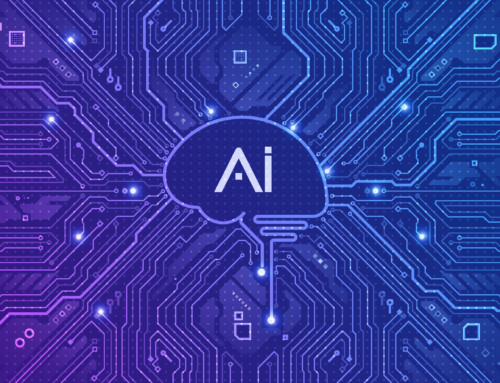Artificial intelligence (AI) is transforming industries and streamlining processes, whether it’s through intuitive voice assistants or the rise of self-driving cars. In the field of cybersecurity, in particular, generative AI models — which were once only used for creative tasks such as content and video creation — can transform an organization’s cyber defenses. As these technologies continue to evolve, understanding how generative AI is reshaping cybersecurity is essential to keeping your business safe in the long run.
What is generative AI?
Generative AI is a type of artificial intelligence designed to create new content by learning patterns and structures from existing data. While traditional AI is primarily used to analyze and classify data, generative AI is unique for its capacity to generate new text, images, and code. This ability to synthesize new material is what makes generative AI so useful for cybersecurity.
Generative AI cybersecurity is largely driven by two groundbreaking technologies:
- Large language models (LLMs) are advanced AI systems built to process, interpret, and produce human language in a natural and coherent way. These models can be trained on massive datasets and used to create realistic texts, making them particularly effective in producing simulated phishing attacks and business email compromise scams.
- Generative adversarial networks (GANs) consist of two neural networks: one generates new data, while the other evaluates its authenticity. The process enables GANs to generate realistic synthetic data, which is useful in cybersecurity for simulating attacks or creating malicious code examples to train defense systems.
Both LLMs and GANs are used in generative AI cybersecurity to enhance threat detection, improve incident response, and strengthen overall security measures.
What are the applications of generative AI in cybersecurity?
Organizations can harness the power of generative AI models to bolster their cybersecurity posture in the following ways:
Threat detection
Considering the vast amount of data generated today, it is nearly impossible for human analysts to manually review and detect every activity or event that could pose a potential threat. But when integrated with modern security tools, generative AI systems can analyze vast amounts of security data on behalf of human users, improving threat detection accuracy while minimizing false positives.
These AI models continuously learn from threat intelligence databases and internal security event management systems to identify anomalies — such as irregular network traffic or unusual data transfers — that traditional systems may overlook. Such advanced detection empowers cybersecurity teams to prevent costly full-blown breaches.
Phishing and social engineering prevention
Another useful application of generative AI is phishing prevention. AI models can simulate phishing attacks with deceptive messages that closely imitate legitimate communications. They can even replicate advanced social engineering schemes, including voice and facial impersonations, making them nearly undetectable to the untrained eye.
Using these simulations, businesses can expose employees to realistic phishing and social engineering scenarios, helping them learn to recognize and avoid even the most sophisticated schemes. If employees can catch these advanced tactics, it means no threat will slip through the cracks.
Vulnerability assessment
AI plays a crucial role in vulnerability assessments, enabling organizations to proactively identify weaknesses within their systems. By generating artificial attack vectors or testing various scenarios, AI tools can pinpoint vulnerabilities that might otherwise go unnoticed. This approach enhances the company’s security posture by providing a deeper understanding of potential attack points, allowing security teams to patch vulnerabilities before threat actors exploit them.
Security automation
Generative AI can automate many of the tasks traditionally performed by security analysts and system administrators. It can take over network monitoring and security incident analysis, enabling teams to focus on more critical tasks. Automated reporting also accelerates compliance processes and compiles accurate documentation of security events.
Incident analysis and reporting
AI tools powered by generative AI can rapidly analyze the event, identify the entry point used, and generate detailed reports. These comprehensive insights uncover how the breach unfolded. They help security teams understand the attack dynamics, refine response strategies, reduce the risk of future incidents, and enhance the effectiveness of security operations.
The benefits of integrating generative AI into cybersecurity
Integrating generative AI into cybersecurity offers organizations a range of advantages, such as:
Faster threat response
Unlike traditional security systems, AI models excel at large-scale security event analysis and detecting sophisticated cyberthreats quickly.
Scalable cybersecurity framework
Generative AI is scalable, making it suitable for enterprises of all sizes. Whether dealing with a handful of endpoints or thousands, AI systems can efficiently handle the growing demands of business security data. This scalability empowers security teams to effectively manage large-scale operations and adapt to evolving cyber threats.
Proactive risk mitigation
Generative AI tools make it easy for security and compliance teams to identify system vulnerabilities, poor security habits, and data privacy issues within their IT infrastructure. By automating the assessment of security measures and protocols, these tools significantly reduce the time and effort needed for manual evaluations, allowing organizations to implement effective strategies to mitigate cyber risks before they arise.
The security challenges of generative AI
While generative AI greatly improves cyber defenses and compliance measures, it also presents its own unique set of challenges:
AI-powered attacks
As generative AI evolves, concerns grow about its potential misuse by hackers to develop more sophisticated threats that are harder to detect and defend against. Generative AI can be exploited to create dynamic malware attacks, phishing attacks, deepfakes, and advanced persistent threats.
Data privacy and security concerns
As reliance on generative AI grows, so do worries about data privacy. Using real business data to train AI models could lead to unintentional data leaks or misuse. As such, organizations must be cautious about how they handle sensitive data and uphold strict privacy standards when employing AI tools.
Ethical and regulatory issues
As generative AI becomes a more integral part of cybersecurity strategies, companies must navigate complex regulations. Taking into account ethical and legal considerations, such as ensuring compliance with data security regulations and addressing the potential misuse of AI, are critical to the successful deployment of AI systems in cybersecurity.
AI skills shortage
Finally, the implementation of AI systems in cybersecurity requires highly specialized knowledge. The shortage of security professionals skilled in AI tools and machine learning means that organizations may struggle to fully capitalize on the potential of these technologies.
To address these challenges, organizations need a managed security services provider that can not only deploy AI systems, but also provide ongoing support and guidance to verify that the technology is being used effectively.
If you want to use generative AI to bolster your cybersecurity strategy, Dynamic Solutions Group is here to help. Contact us today to explore how AI in cybersecurity can enhance your defense against emerging threats.





